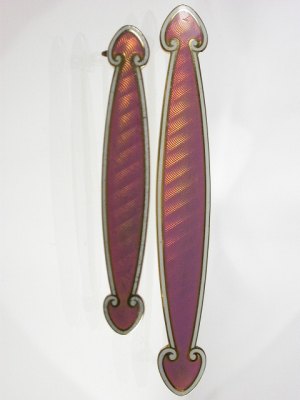Sweetheart Jewelry
February 19, 2015Imagine you're a young man, still a kid really, being shipped across the ocean to fight a war for your country. Aside from the obvious fear, there would be a lot of emotions surging through your mind. Would you ever see the people you loved again? Would they still be waiting for you when you got back?
To overcome some of these emotions, soldiers stationed overseas frequently sent pieces of jewelry back home to their female loved ones. This sweetheart jewelry, as it came to be known, was sometimes handmade by soldiers in the trenches, but more often it was of the machine-made variety, sold to servicemen by a third party.
As the name implies, sweetheart jewelry was sent home to girlfriends and wives, but romantic partners weren't the only recipients. Mothers and sisters also wore such jewelry with patriotic pride, as a promise that their son or sibling was alive and well, that they would see him again, that his love for them would never die.
Because most metal of the time was being melted down for use in the war effort, the value of most sweetheart jewelry came from the sentimentality and not the materials from which it was fashioned. Indeed, non-precious materials like wood, shell, ivory, wire and enamel were far more common than precious metals and gemstones.
The antique pins pictured in the image above serve as a good example of the type of sweetheart jewelry a World War I serviceman might have dispatched home to the woman in his life. As might be expected, many sweetheart jewelry pieces also came in the shape of a heart.
As you browse vintage rings and other jewelry items from the 1910s and 1940s World War I and II eras, be sure to take a close look at their underbellies. You just might find some initials or words engraved there that link a soldier to his mother, sister, girlfriend, or wife.
Return to blog home






 Facebook
Facebook Pinterest
Pinterest Instagram
Instagram